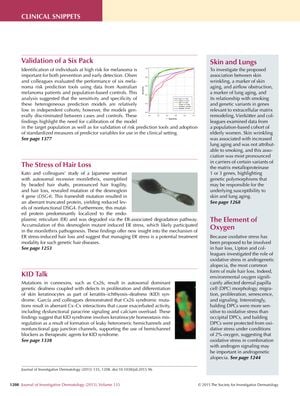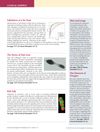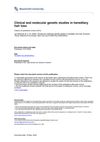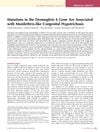Clinical Snippets: Melanoma Risk Prediction, Monilethrix Mutation, Keratitis-Ichthyosis-Deafness Syndrome, Skin Wrinkling and Lung Aging, Oxidative Stress in Androgenetic Alopecia
May 2015
in “
Journal of Investigative Dermatology
”

TLDR Melanoma risk tools need improvement, a gene mutation causes a hair disorder that might be treated by managing cell stress, a potential therapy for a skin-ear disorder involves blocking cell channels, skin wrinkling may indicate lung aging regardless of smoking, and oxidative stress might contribute to common baldness.
In a 2015 study, Olsen and colleagues assessed the performance of six melanoma risk prediction tools and found that while they could generally distinguish between melanoma patients and controls, their sensitivity and specificity were relatively low in independent cohorts, indicating a need for model calibration and standardized measures in clinical settings. Kato and colleagues identified a mutation in the desmoglein 4 gene causing autosomal recessive monilethrix, a hair disorder, and suggested that managing endoplasmic reticulum stress could be a potential treatment. García and colleagues' research on keratitis-ichthyosis-deafness syndrome suggested that hemichannel blockers could be therapeutic due to the misregulation of keratinocyte homeostasis caused by aberrant connexin interactions. Vierkötter and colleagues found that skin wrinkling, a sign of skin aging, was associated with lung aging independently of smoking, particularly in individuals with certain genetic variants. Upton and colleagues discovered that oxidative stress affected various aspects of dermal papilla cell function and that balding cells were more sensitive to oxidative stress, indicating its potential role in androgenetic alopecia.


